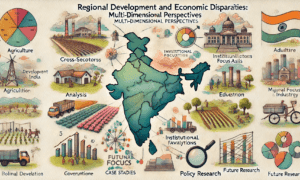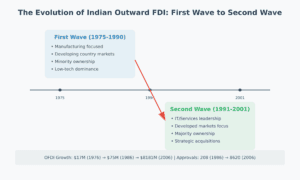Ever wondered how Indian states compete in the global marketplace? Karnataka’s journey offers fascinating insights into how regional policies and business characteristics shape international trade success. Let’s explore how this pioneering state crafted its path to becoming an export powerhouse.
The Pioneer’s Journey
In 2003, Karnataka made a bold move – becoming India’s first state to create its own export promotion policy. The goal? Double its share of national exports from 7% to 15% by 2007. Think of it as a state deciding to play in the major leagues of global trade, not just watching from the sidelines.
Building the Export Machine
Karnataka didn’t just dream big; it created an entire ecosystem to support its export ambitions:
- The Strategic Command Center: The Department of Industries and Commerce acts as the brain, coordinating everything from industrial parks to export zones
- The Global Trade Guide: The Visvesvaraya Industrial Trade Centre (VITC) serves as a knowledge hub, helping businesses navigate international markets since 1965
- The Infrastructure Builders: Organizations like KIADB develop the physical foundation – industrial parks, export zones, and tech parks
- The Support Squad: Various agencies provide everything from technical advice (TECSOK) to entrepreneurship development (CEDOK)
The Results: A Mixed Success Story
Like any ambitious venture, Karnataka’s export journey has both wins and challenges:
The Wins
- Achieved impressive growth, contributing about 25% of India’s total exports
- Dominated specific sectors: 74% of India’s coffee exports, 46% of electronics, and 34% of software
- Successfully attracted global tech companies, especially in IT services
The Challenges
- Manufacturing exports haven’t kept pace with services
- Small businesses, despite high export intensity, are losing share to larger firms
- Foreign manufacturers haven’t engaged in exports as much as expected
What Makes Some Firms Better Exporters?
The research reveals some interesting patterns:
Success Factors:
- Larger size gives companies an edge – more resources mean more export capability
- Government incentives significantly boost export performance
- Firms in R&D-intensive industries tend to export more
Surprising Findings:
- Newer firms often export more than established ones
- High-tech sectors show disappointing export performance
- Domestic market leaders don’t automatically become export champions
Practical Takeaways
For Business Owners:
- Consider size advantages but don’t let being small stop you
- Leverage government export incentives
- Focus on building R&D capabilities
- Don’t wait to get old to go global
For Policymakers:
- Continue supporting industrial clusters and common facilities
- Maintain focus on fiscal incentives for exports
- Develop targeted programs for established firms
- Create special initiatives for high-tech manufacturing exports
Looking Ahead
Karnataka’s story shows that regional export success requires more than just good intentions. It needs:
- A comprehensive support system
- Focus on both traditional and new-age sectors
- Balance between large and small enterprises
- Continuous policy innovation
The state’s experience offers valuable lessons for other regions aiming to boost their global trade presence while highlighting the complex interplay between policy, business characteristics, and export success.
Academic Abstract:
Karnataka is among pioneering Indian states to frame suitable policies aimed at encouraging local firms’ export activities. Promotion and facilitation of firms to look beyond national market was achieved by creating a strong enabling institutional framework, supporting expansion of productive capacity and helping exporting firms gain access to required physical infrastructure. As a result of such policies, exports from the Karnataka have been growing rapidly, with Karnataka contributing over half a quarter of Indian exports of commodities and software. The present study provides an overview of export trends and patterns of Karnataka in the backdrop of the state policy developments. It examines the relevance of various factors pertinent to the exports by Karnataka manufacturing firms and deduces implications for development policy of the state.
Learn More:
Full citation: Pradhan, Jaya Prakash, Mohammad Zohair and Mallikarjun V. Alagawadi (2013), ‘Regional Policies, Firm Characteristics, and Exporting in the Indian State of Karnataka’, Foreign Trade Review, 48(1), pp. 45–81, Publisher: SAGE Publications.
Learn More:





































